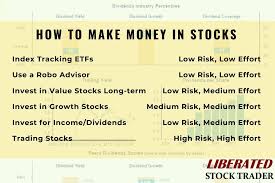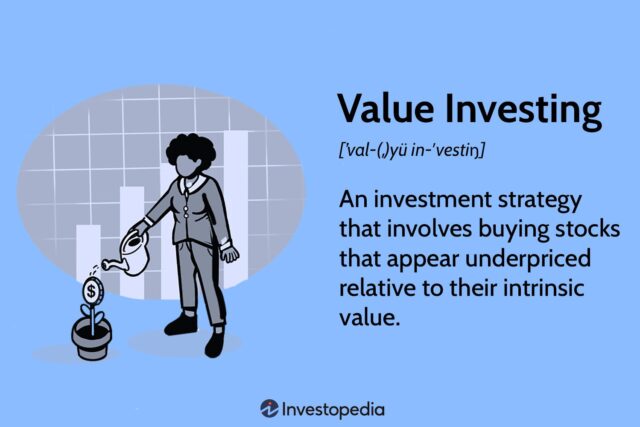Value investing, a strategy that seeks to capitalize on stocks that are undervalued relative to their intrinsic worth, has been widely embraced by investors for decades. The approach, popularized by Benjamin Graham and later refined by his disciple Warren Buffett, focuses on identifying stocks that appear to be trading for less than their book value or intrinsic value. In this log, the principles, methodologies, and benefits of value investing will be discussed in detail, utilizing a passive voice throughout.
Fundamental Principles
The core principle of value investing revolves around the concept of intrinsic value, which can be defined as the perceived true worth of a company based on its fundamentals. These fundamentals include earnings, dividends, assets, and liabilities. It is believed by value investors that the market will eventually recognize and correct the mispricing of undervalued stocks, leading to significant profit potential.
Methodologies
Several key methodologies are employed in the practice of value investing.
1. Financial Statement Analysis:
The financial health of a company is meticulously analyzed by examining its financial statements. Important metrics such as the price-to-earnings (P/E) ratio, price-to-book (P/B) ratio, and dividend yield are scrutinized to determine the attractiveness of a stock. Companies with low P/E ratios, low P/B ratios, and high dividend yields are often targeted.
2. Margin of Safety:
The margin of safety is a critical concept in value investing. It involves purchasing stocks at a significant discount to their intrinsic value, thereby providing a buffer against errors in analysis or market downturns. This practice minimizes the risk of loss and maximizes the potential for gain.
3. Long-Term Perspective:
A long-term perspective is maintained by value investors, who believe that short-term market fluctuations should not deter investment decisions. Patience is considered essential, as it is thought that the true value of a stock will be realized over time.
4. Contrarian Investing:
Value investing often entails a contrarian approach, wherein stocks that are out of favor with the general market are sought after. These stocks are typically undervalued due to negative sentiment or temporary issues, providing an opportunity for substantial gains once the market sentiment improves.
Benefits of Value Investing
Several benefits are associated with value investing, contributing to its widespread adoption.
1. Reduced Risk:
The risk of loss is mitigated by purchasing stocks at a discount to their intrinsic value, as mentioned earlier. This approach ensures that even if the market does not recognize the stock’s true value, the investment is still backed by solid fundamentals.
2. Consistent Returns:
Historical performance data has shown that value investing can yield consistent returns over the long term. The strategy’s focus on strong, undervalued companies often results in a steady stream of dividends and capital appreciation.
3. Psychological Advantage:
Value investing provides a psychological advantage by encouraging a disciplined and patient approach to investing. By adhering to the principles of value investing, emotional decision-making is minimized, reducing the likelihood of impulsive actions based on market volatility.
Challenges and Criticisms
Despite its benefits, value investing is not without its challenges and criticisms.
1. Value Traps:
A value trap occurs when a stock appears undervalued but is actually experiencing fundamental issues that hinder its performance. Identifying and avoiding value traps requires thorough research and analysis.
2. Changing Market Conditions:
Market conditions and economic cycles can impact the effectiveness of value investing. During periods of high market optimism, value stocks may underperform compared to growth stocks, which can lead to extended periods of underperformance for value investors.
3. Subjectivity in Valuation:
The determination of intrinsic value is inherently subjective, relying on various assumptions and estimates. Different investors may arrive at different valuations for the same stock, leading to differing opinions on what constitutes an undervalued stock.
Historical Context and Prominent Figures
Value investing has a rich historical context, with its roots tracing back to the early 20th century. Benjamin Graham, often referred to as the “father of value investing,” laid the foundation with his seminal work, “The Intelligent Investor,” published in 1949. Graham’s principles were further refined and popularized by Warren Buffett, whose investment success has made him one of the most revered figures in the financial world.
Buffett’s approach to value investing, often termed “Buffettology,” emphasizes the importance of investing in high-quality companies with strong competitive advantages, or “moats.” His success has inspired countless investors to adopt value investing principles and seek out undervalued opportunities in the market.
Strategies to Make Money in the Stock Market for the Long Term

In the realm of investing, a variety of strategies have been employed to secure financial gains over extended periods. The stock market, known for its volatility and unpredictability, requires a strategic approach to maximize returns and minimize risks. The long-term investor’s success often hinges on several well-established principles.
1. Diversification
Diversification is widely recognized as a fundamental strategy in long-term investing. By spreading investments across various asset classes, industries, and geographical regions, risks are mitigated. A portfolio consisting of stocks, bonds, real estate, and other assets ensures that the performance of any single investment does not unduly affect the overall portfolio. Historically, diversification has been shown to reduce volatility and provide a more stable growth trajectory.
2. Dollar-Cost Averaging
The principle of dollar-cost averaging is another strategy frequently used to build wealth over time. This method involves investing a fixed amount of money at regular intervals, regardless of the stock market’s performance. By doing so, shares are purchased at varying prices, which averages out the cost per share over time. This approach reduces the impact of market fluctuations and avoids the pitfalls of attempting to time the market.
3. Long-Term Holding
A long-term holding strategy is employed to benefit from the compounding effect of investments. Stocks held for extended periods are likely to appreciate in value due to the company’s growth and earnings accumulation. Frequent trading is typically avoided to reduce transaction costs and tax liabilities. The focus remains on selecting fundamentally strong companies with sustainable competitive advantages.
4. Reinvestment of Dividends
The reinvestment of dividends is a strategy where dividends received from investments are reinvested to purchase additional shares. This compounding effect accelerates the growth of the investment portfolio over time. By continuously reinvesting dividends, investors benefit from both the income generated and the increased number of shares, which can amplify returns.
5. Research and Analysis
Comprehensive research and analysis are critical to making informed investment decisions. Companies are evaluated based on financial statements, industry trends, and market conditions. Fundamental analysis, which involves examining a company’s financial health and business model, is employed to assess potential investments. Technical analysis, which involves studying stock price movements and patterns, may also be used to time entry and exit points effectively.
6. Risk Management
Effective risk management is essential for long-term investment success. Strategies such as setting stop-loss orders can protect against significant losses. Diversification and asset allocation further manage risks by distributing investments across different sectors and asset classes. An understanding of personal risk tolerance ensures that the investment approach aligns with individual financial goals and constraints.
7. Regular Portfolio Review
A periodic review of the investment portfolio is necessary to ensure alignment with long-term objectives. Market conditions, economic factors, and personal financial situations may change, necessitating adjustments to the portfolio. Rebalancing, which involves realigning the portfolio’s asset allocation, helps maintain the desired risk-reward profile and ensures that investments remain in line with long-term goals.
8. Focus on Quality Stocks
Investing in high-quality stocks, characterized by strong financial performance and a solid business model, is often prioritized. Companies with a history of consistent earnings growth, a competitive edge, and prudent management are typically favored. Quality stocks are expected to provide stable returns and withstand market downturns better than lower-quality counterparts.
9. Avoiding Emotional Decision-Making
Emotional decision-making can undermine long-term investment success. Fear and greed are common emotional drivers that lead to impulsive decisions, such as selling during market downturns or chasing after recent high performers. A disciplined approach, guided by a well-thought-out investment plan, helps in maintaining focus and making decisions based on logic rather than emotions.
10. Leveraging Tax-Advantaged Accounts
Utilizing tax-advantaged accounts, such as retirement accounts (e.g., IRAs or 401(k)s), can enhance long-term investment returns. These accounts offer tax benefits, such as tax-deferred growth or tax-free withdrawals, which can significantly impact overall returns. Understanding the specific rules and benefits of these accounts helps in optimizing investment strategies and minimizing tax liabilities.
Conclusion
Value investing, with its focus on intrinsic value, margin of safety, and long-term perspective, remains a powerful and enduring investment strategy. The methodology’s emphasis on disciplined research and analysis, combined with its potential for consistent returns and reduced risk, makes it an attractive option for many investors. While challenges and criticisms exist, the historical success of prominent value investors like Benjamin Graham and Warren Buffett underscores the potential rewards of this approach. As market conditions continue to evolve, the principles of value investing will likely remain relevant, providing a foundation for prudent and profitable investment decisions.










